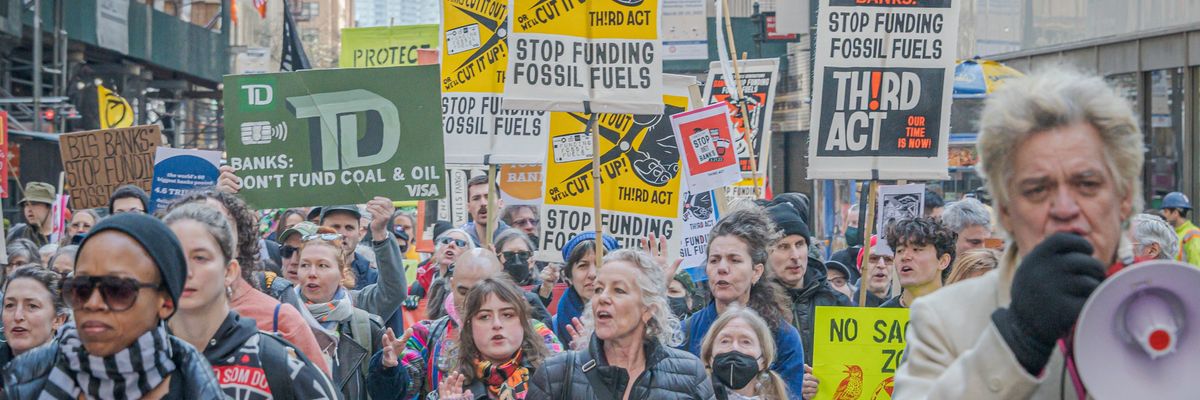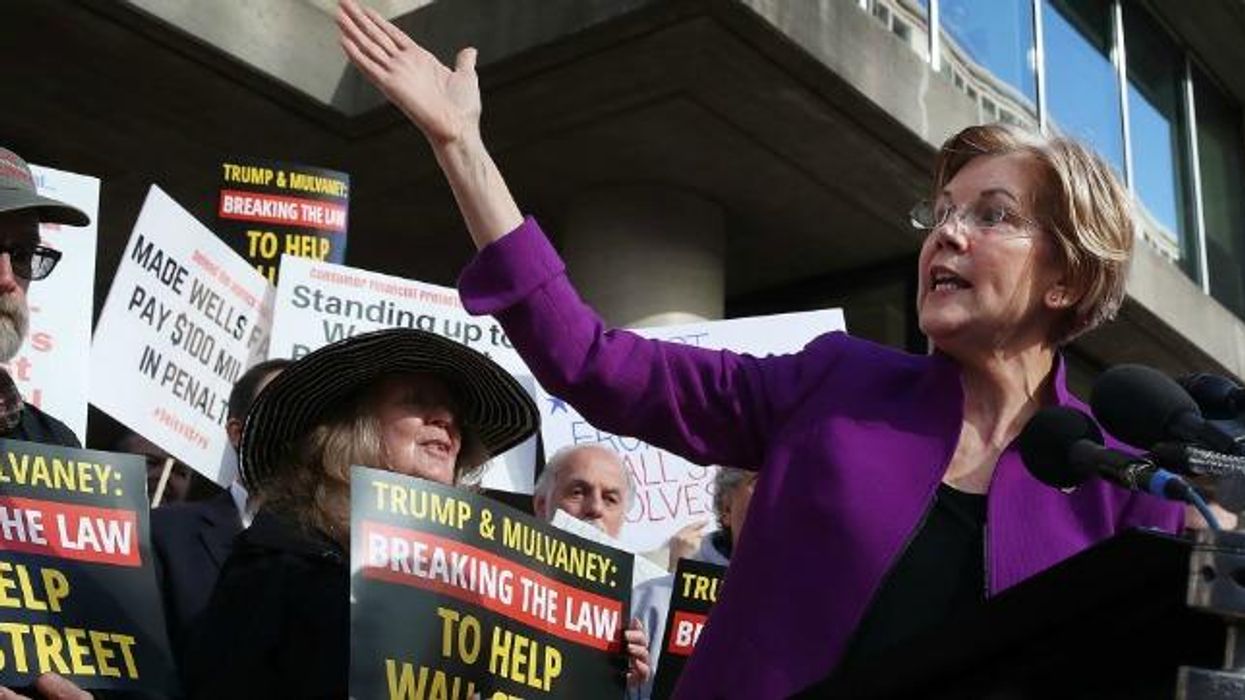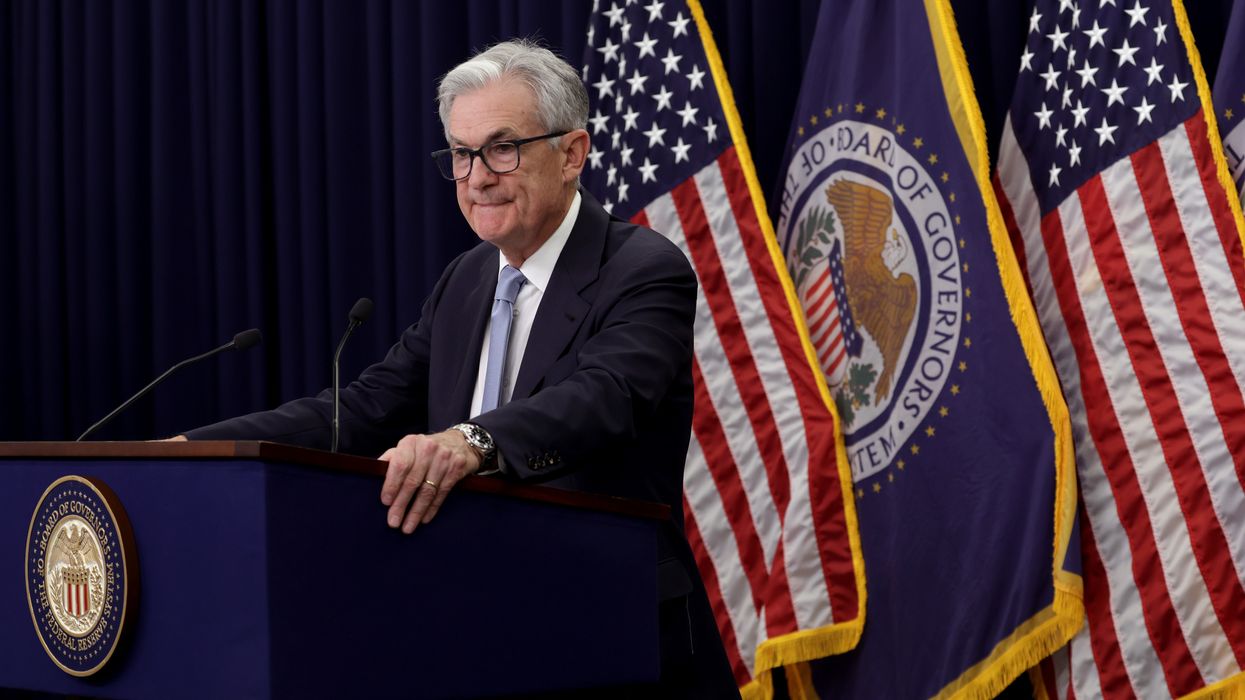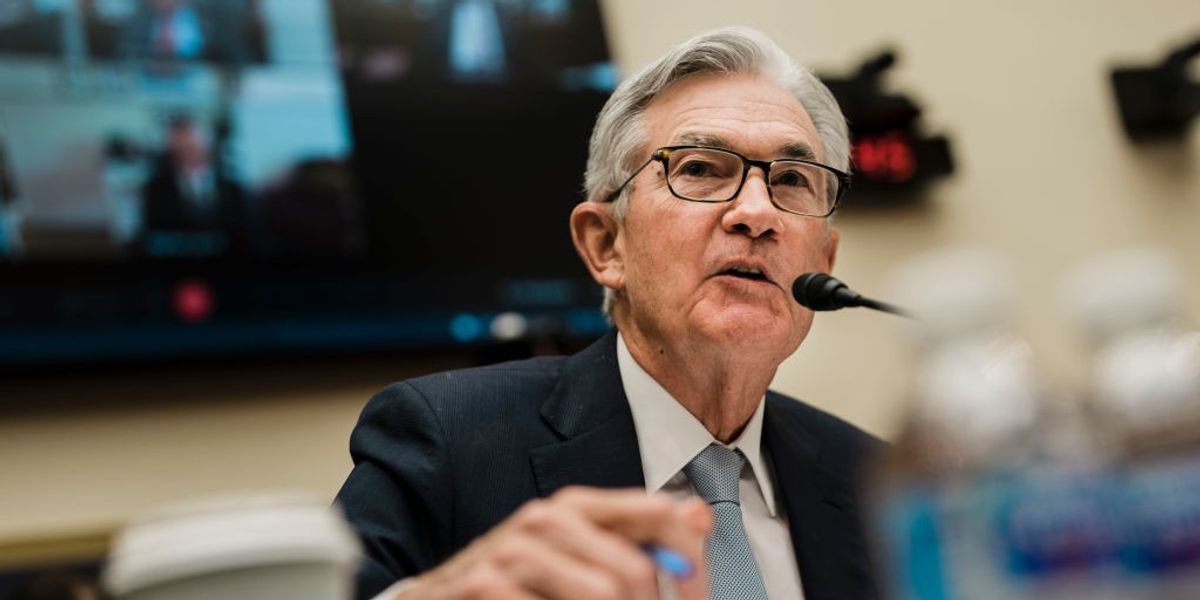
On
CNN March 14, Roger Altman, a former deputy Treasury secretary in the Clinton administration, said that American banks were on the verge of being nationalized:
What the authorities did over the weekend was absolutely profound. They guaranteed the deposits, all of them, at Silicon Valley Bank. What that really means… is that they have guaranteed the entire deposit base of the U.S. financial system. The entire deposit base. Why? Because you can’t guarantee all the deposits in Silicon Valley Bank and then the next day say to the depositors, say, at First Republic, sorry, yours aren’t guaranteed. Of course they are.
…So this is a breathtaking step which effectively nationalizes or federalizes the deposit base of the U.S. financial system.
The deposit base of the financial system has not actually been nationalized, but Congress is considering modifications to the Federal Deposit Insurance Corporation (FDIC) insurance limit. Meanwhile, one state that does not face those problems is North Dakota, where its state-owned bank acts as a “mini-Fed” for the state. But first, a closer look at the issues.
Bail In, Bail Out, or “Socialism for the Rich”?
On Friday, March 10, Silicon Valley Bank (SVB) was put into receivership by the FDIC. The FDIC announced that deposits over the $250,000 insurance limit would get an advance dividend within the next week, and would receive a receivership certificate for the rest of the funds. Most of the depositors were venture-backed startups that needed to keep large deposits in the bank to meet payroll and pay suppliers, and over 95% of the deposits were uninsured and at risk of being lost. It was basically a “bail in” of the uninsured deposits, which would be recoverable only if funds were available after the bank’s assets had been sold.
But that arrangement lasted only two days. On March 12, Signature Bank was put into receivership; and the FDIC, Treasury, and Federal Reserve jointly announced that all of the deposits at the two banks, not just those under the insurance limit, would be available for withdrawal on demand.
At
a Senate Finance Committee hearing on March 16, Treasury Secretary Janet Yellen said that the guarantee would not apply to all deposits at all banks. Rather, the determination would be made on a case-by-case basis.
In a
Bloomberg News interview on March 16, former FDIC Chair Sheila Bair criticized that decision. She observed that the two banks getting special treatment were not “systemically important,” and that the cost of the expanded guarantee was to be covered by a special assessment against all insured banks, including the small community banks that provide essential credit to local businesses. She argued that if guarantees were going to be given over the $250,000 limit, they should apply to deposits everywhere.
Meanwhile, on March 12, the Federal Reserve announced that it had set up a special purpose vehicle of the sort arranged for Covid relief in March 2020, called
the Bank Term Funding Program (BTFP). Like the Covid special purpose vehicles, it would be backstopped with $25 billion from the Exchange Stabilization Fund (ESF), a fund set up in 1934 to stabilize the exchange value of the dollar. The BTFP was to be available to any bank needing it, and many banks obviously did. Over $300 billion in short-term loans were withdrawn from the Fed’s various facilities just in the week after SVB’s collapse.
This money is not, however, the sort of “free lunch” provided to troubled banks in the last financial crisis. The money is to be advanced as a loan for up to a year, at a
hefty interest rate as of March 22 of 4.88%. According to a Federal Reserve press release, advances will be made to “eligible depository institutions pledging U.S. Treasuries, agency debt and mortgage-backed securities, and other qualifying assets as collateral. These assets will be valued at par. The BTFP will be an additional source of liquidity against high-quality securities, eliminating an institution’s need to quickly sell those securities in times of stress.”
“Valued at par” means that banks can hold their long-term federal securities to maturity while acquiring ready cash against them to meet withdrawals, without having to “mark to market” and sell at a loss.
The Systemic Flaw
So what caused this crisis, and what can be done to remedy it?
In the midst of the 2008 economic crisis, former Fed Chair Alan Greenspan conceded that
there was a flaw in his perception of the financial operating system. For 40 years, he had believed that banks could “self-regulate” responsibly, a presumption that had proven to be flawed.
In the case of SVB, however, the bank was not engaged in the sort of risky lending seen in the subprime crisis, and increased
“stress testing” wouldn’t have saved it. It had put its deposits largely in federal securities, purported to be the safest assets available—so safe that they carry a “zero risk weighting” requiring no extra capital buffer. What went wrong was that they were long-term bonds at low interest. When rates shot up, the market value of the bonds dropped, since buyers prefer newer bonds paying higher interest. Bonds that could be sold were sold at a loss, and some marked “hold to maturity” could not be sold at all. As a result, SVB lacked the liquidity to meet the sudden unexpected demand for withdrawals.
The flaw to which SVB and many other “troubled” banks have fallen victim is the age-old systemic problem of “borrowing short to lend long.” For centuries, banks have borrowed the money of depositors who expect to have it available on demand, and have invested it in long-term assets that cannot be immediately liquidated. The system works well so long as the depositors don’t panic and rush to pull their money out all at once. But when they do, if the problem is systemic, not just single banks but the whole banking system can collapse.
We used to see this flaw dramatized every December, when TV networks ran the 1946 Christmas classic “It’s a Wonderful Life.” When the Bailey Brothers Building and Loan suffered a bank run, George Bailey (Jimmy Stewart) had to explain to the panicked depositors that their money had been lent to their neighbors. He was on the verge of suicide, when a guardian angel showed him how critical he and his bank had been to the community; and the neighbors pitched in and rescued the bank.
Even closer to the situation today was
the crisis of the savings and loan associations (S&Ls) of the 1980s, after the Federal Reserve raised interest rates dramatically to kill inflation. Most of the assets of the S&Ls were long-term fixed-rate mortgages. As rates rose, they had to pay more to attract deposits; but the amount they earned on their fixed-rate mortgages didn’t change. Losses mounted, but the S&L insurance fund, the FSLIC, lacked sufficient money to reimburse all the depositors at failed S&Ls so the regulators turned a blind eye and allowed them to keep operating as “zombies.” The matter was finally resolved with legislation in 1989 that placed S&L insurance under the FDIC and established the Resolution Trust Corporation to resolve the remaining troubled S&Ls. The ultimate cost to the taxpayers was estimated to be as high as $124 billion.
As with George Bailey’s savings and loan, the flaw was not “fractional reserve” lending. The S&Ls pooled the money of their customers and lent only what they had. The systemic flaw was and still is that to make long-term loans, banks must borrow “other people’s money,” which is expected to be available on demand. Today the banks’ liquidity options include not just their own depositors but other banks’ depositors in the fed funds market, and pension funds and other institutional creditors lending in the repo market. But they all expect their money to be available on demand; and if the bank has lent it out in long-term loans, the bank can be caught short shuffling reserves around trying to meet that demand.
The Failed Banks Were Not Nationalized, But Maybe They Should Have Been
One option that was debated in the 2008-09 crisis was actual nationalization. As
professor Michael Hudson wrote in February 2009:
Real nationalization occurs when governments act in the public interest to take over private property… Nationalizing the banks along these lines would mean that the government would supply the nation’s credit needs. The Treasury would become the source of new money, replacing commercial bank credit. Presumably this credit would be lent out for economically and socially productive purposes, not merely to inflate asset prices while loading down households and business with debt as has occurred under today’s commercial bank lending policies.
Gar Alperovitz, professor emeritus at the University of Maryland, also weighed in on the issue. In a 2012
New York Times article titled “Wall Street Is Too Big to Regulate,” he noted that the five biggest banks—JPMorgan Chase, Bank of America, Citigroup, Wells Fargo, and Goldman Sachs—had amassed assets amounting to more than half the nation’s GDP. He wrote:
With high-paid lobbyists contesting every proposed regulation, it is increasingly clear that big banks can never be effectively controlled as private businesses. If an enterprise (or five of them) is so large and so concentrated that competition and regulation are impossible, the most market-friendly step is to nationalize its functions…
Nationalization isn’t as difficult as it sounds. We tend to forget that we… essentially nationalized the American International Group, one of the largest insurance companies in the world, and the government still owns roughly 60 percent of its stock.
Another example was Continental Illinois, the largest bank bankruptcy and the seventh-largest bank in the country when it failed in 1984. The FDIC wiped out existing shareholders, infused capital, took over bad assets, replaced senior management, and owned the bank for about a decade, running it as a commercial enterprise, selling it in 1994.
What constituted a radical departure from capitalist principles in the last financial crisis was not “nationalization” but an unprecedented wave of bank bailouts, sometimes called “welfare for the rich.” The taxpayers bore the losses while the culpable management not only escaped civil and criminal penalties but made off with record bonuses. Banks backed by an army of lobbyists succeeded in getting laws changed so that what was formerly criminal behavior became legal. Instead of nationalization, we got TARP, the
Troubled Asset Relief Program, in which toxic assets were purchased from financial institutions by the Treasury. Faced with the inequity of that solution, many economists recommended nationalization instead. Willem Buiter, chief economist of Citigroup and formerly a member of the Bank of England’s Monetary Policy Committee, wrote in the Financial Times in September 2009:
Is the reality of the modern, transactions-oriented model of financial capitalism indeed that large private firms make enormous private profits when the going is good and get bailed out and taken into temporary public ownership when the going gets bad, with the taxpayer taking the risk and the losses?
If so, then why not keep these activities in permanent public ownership? There is a long-standing argument that there is no real case for private ownership of deposit-taking banking institutions, because these cannot exist safely without a deposit guarantee and/or lender of last resort facilities that are ultimately underwritten by the taxpayer. …Once the state underwrites the deposits or makes alternative funding available as lender of last resort, deposit-based banking is a license to print money. [Emphasis added.]
Those are all good arguments, but Congress is not likely to nationalize the whole banking system any time soon.
What About Nationalizing the Liquidity Pool?
Without going to those lengths, what could be made a public utility is the banks’ liquidity pool. Banks could borrow directly from the deep pocket of the central bank, the “lender of last resort” (or from the Treasury if it were reengineered so that it could issue money as credit without taxing or going into debt). Banks would still need to make “prudent” loans—loans to borrowers who had demonstrated an ability to pay the money back—since if they suffered substantial defaults, they would not be able to balance their books and could be put into bankruptcy. They would still charge interest to cover their costs, and they would still compete for borrowers by keeping their interest rates low, maintaining the principles of “market capitalism” operating now. Customer deposits could be sequestered separately from loans, e.g. at government-backed postal banks. In fact, sequestering customer funds is
what brokerages (such as Schwab and Fidelity) do now. Rather than the bank gambling with your money, you gamble with it yourself. But that, of course, can be risky too!
In any case sequestering deposits is not likely to happen either. What is being sought is what Roger Altman predicted—FDIC insurance coverage of the entire deposit base. In a March 17 letter
first reported by Bloomberg News, the Midsize Bank Coalition of America called on regulators “immediately… to reinstate full deposit insurance coverage for depositors,” for two years. That was done in 2008, the letter noted, “and was one of the most effective tools used in the great financial crisis and it needs to be brought back immediately. Importantly, as happened previously, this increase in insurance should be paid for directly by the banks themselves by simply increasing the deposit insurance assessment on banks who choose to participate in this increased insurance coverage.”
The concern for midsize banks is that depositors have been fleeing to giant “too big to fail” banks, perceiving them to be safer. But as Cornell professor Robert Hockett observes, midsize banks lend to the midsize businesses that are the backbone of the productive economy. He has drafted legislation to provide for universal deposit insurance,
discussed in Forbes. However, it’s an uphill battle. Even Sheila Bair, who is clearly sympathetic to the plight of local banks, has reservations on full coverage. As reported on MSN.com:
FDIC Chairwoman Sheila Bair said Tuesday that Congress should consider temporarily providing guarantees for deposits in transaction accounts used by employers to pay their workers—a move that some Democrats are considering.
But Bair said it would be an “overreaction” to insure all bank deposits.
“Unlimited insurance would be very expensive to do. It would be assessed on the banking system, backstopped by taxpayers, and would primarily help very, very wealthy people,” Bair said on Washington Post Live.
Small community banks—defined as banks with $10 billion or less in assets—have spoken out against paying more to cover the failure of larger banks such as SVB.
The Public Bank Option
Meanwhile, one midsize bank that has escaped this furor is the Bank of North Dakota. With assets in 2021 of $10.3 billion and a return on investment of 15%, the BND is owned by the state, which self-insures it. There is no fear of bank runs, because the state’s revenues compose the vast majority of its deposits, and they must be deposited in the BND by law.
The state’s local banks are also protected by the BND, which is forbidden to compete with them. Instead, it partners with them, helping with liquidity and capitalization. The BND has been called a “mini-Fed” for the state and its banks. That helps explain why
North Dakota has more local banks per capita than any other state, at a time when other states have been losing banks to big bank mergers, causing the number of U.S. banks to shrink radically.
U.K. professor Richard Werner recently published
a briefing memo supporting the case for a public bank. It was prepared for the state of Tennessee, which is considering a sovereign state bank on the North Dakota model, but the arguments apply to all states. Benefits discussed include dividends, higher state-level tax revenues, greater job creation, greater local autonomy and resilience to shocks, more options for funding public sector borrowing and state pension funds, and protection of financial transaction freedom and privacy.
Small and local is good, but even small regional banks need to pool their resources for maximum efficiency and security. A state-owned bank on the model of the Bank of North Dakota can provide low-interest loans, liquidity, and financial sovereignty, keeping financial resources in the state directed to public purposes, all while turning a profit for the state.
This post was originally published on Common Dreams.
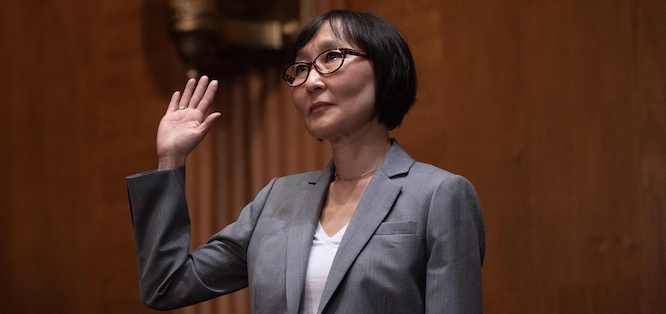

 With over 100 cases I am sure there was not one of them where the government decided to have hyperinflation. It seems governments get to where the deficit is over 40% of their spending and after a few years people don’t want to buy their bonds any more (enough people can see trouble coming). So they have to print lots of money just to keep all the employees and programs they are used to. Inflation starts but the government can’t stop printing money (still have all these employees and programs and now inflation is making life extra hard for people). So you get a feedback loop where more printing causes less bond buying and less real taxes which means the government has to get an even higher fraction of its spending money by printing money, etc. So things explode out of control. Nobody ever wanted hyperinflation or chose hyperinflation. Events just led to it. Below is a link to a good book on Hyperinflation history:
With over 100 cases I am sure there was not one of them where the government decided to have hyperinflation. It seems governments get to where the deficit is over 40% of their spending and after a few years people don’t want to buy their bonds any more (enough people can see trouble coming). So they have to print lots of money just to keep all the employees and programs they are used to. Inflation starts but the government can’t stop printing money (still have all these employees and programs and now inflation is making life extra hard for people). So you get a feedback loop where more printing causes less bond buying and less real taxes which means the government has to get an even higher fraction of its spending money by printing money, etc. So things explode out of control. Nobody ever wanted hyperinflation or chose hyperinflation. Events just led to it. Below is a link to a good book on Hyperinflation history:




